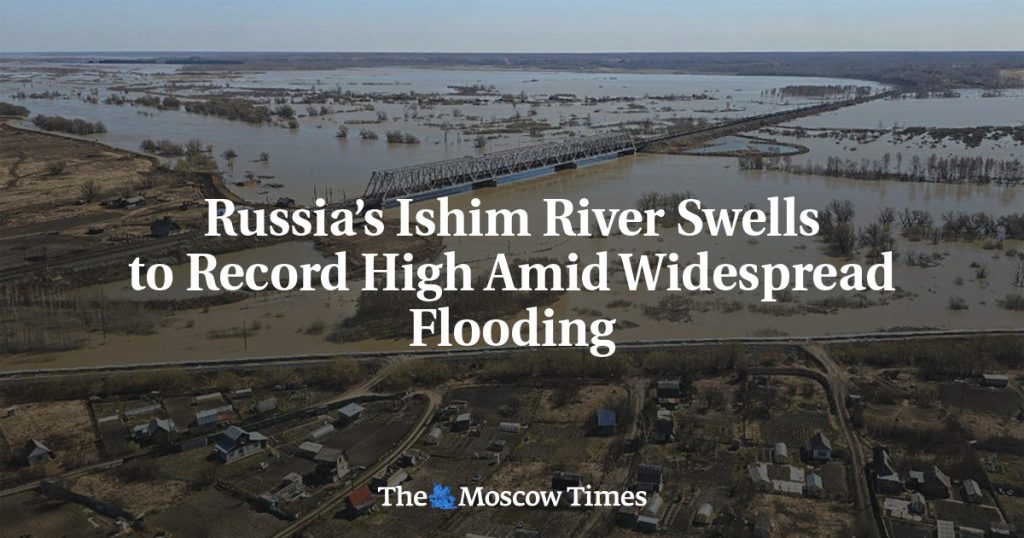Water levels in the Ishim River in Russia’s Tyumen region have reached an all-time high, causing significant traffic congestion on the Tyumen-Omsk highway. The water level continues to increase due to recent rainfall, with the historical maximum of 12.15 meters already reached. Governor Alexander Moor stated that while the water is higher than the asphalt in some areas, the embankment is preventing the highway from overflowing. The resulting traffic jam has stretched around 60 kilometers along both sides of the highway. This flooding is part of a larger pattern of severe floods in Russia and Kazakhstan since early April.
Since early April, Russia and Kazakhstan have been dealing with widespread floods that have resulted in the evacuation of thousands of people. The heavy rainfall, combined with warm spring temperatures, has led to severe flooding in the Urals and western Siberia regions of Russia. Initially caused by melting ice, the flooding has been exacerbated this year by the unusual weather conditions. In response to the swelling rivers, officials in the Tyumen region declared a state of emergency on April 8, with mandatory evacuations in two districts. It was predicted that the Ishim River would reach peak levels around April 23-25, leading to further concerns about the ongoing flooding.
In mid-April, residents in the Tyumen region were urged to evacuate their homes as the nearby Ishim and Tobol rivers rose to dangerous levels. The authorities warned of the potential for significant damage and advised residents to seek safer areas away from the flooding rivers. The conditions in the region have continued to deteriorate, with ongoing heavy rainfall contributing to the high water levels in the Ishim River. Given the scale of the flooding and the challenges it presents for local infrastructure, efforts have been focused on managing the situation and ensuring the safety of residents in the affected areas.
The flooding in the Tyumen region is part of a larger crisis that has impacted both Russia and Kazakhstan, with both countries experiencing widespread floods since early April. The combination of melting ice and heavy rainfall has resulted in significant challenges for authorities in the region, prompting emergency measures such as mandatory evacuations and the declaration of a state of emergency. With the Ishim River already at an all-time high and the forecast predicting further rising water levels, the situation remains critical for residents along the affected rivers. The ongoing efforts to manage the flooding and protect the safety of the population are essential to minimizing the impact of the disaster.
Governor Alexander Moor highlighted the severity of the situation, emphasizing that the water levels in the Ishim River are continuing to rise and surpass historical records. Despite the embankment’s ability to prevent overflow onto the highway, the persistent high water levels have resulted in a major traffic jam along the Tyumen-Omsk highway. The challenges posed by the flooding include not only the physical damage caused by the rising waters but also the disruption to transportation and daily life for residents in the region. As authorities work to address the immediate impact of the floods and ensure the safety of the population, the importance of preparedness and resilience in the face of natural disasters becomes increasingly clear.
The flooding in the Tyumen region serves as a reminder of the unpredictable and destructive power of natural disasters, particularly in the context of changing climate patterns. The combination of melting ice, heavy rainfall, and warm spring weather has led to severe flooding in Russia’s western regions, posing significant challenges for local authorities and residents. The response to the flooding highlights the importance of early warning systems, emergency preparedness, and coordinated efforts to mitigate the impact of such disasters. As the situation in the Tyumen region continues to evolve, it is crucial for authorities to remain vigilant, communicate effectively with the population, and take swift action to protect lives and property in the face of ongoing flooding and its aftermath.


